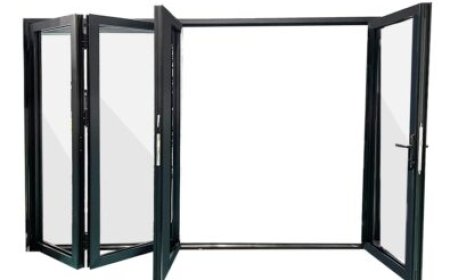Low-Voltage vs. High-Voltage LED Strips: Safety & Efficiency Compared
Discover the safety and efficiency of low-voltage LED strips for your lighting needs. Learn key differences, benefits, and how they compare to high-voltage alternatives.

In the world of LED lighting, choosing the right type of LED strip lights can make all the difference in safety, efficiency, and overall performance. Whether you're looking to illuminate your home, office, or any other space, understanding the distinctions between low-voltage and high-voltage LED strips is crucial. In this article, we'll break down the key differences, benefits, and considerations to help you make an informed decision.
UnderstandingLEDStripLights
LED strip lights, also known as LED tape lights, are flexible circuit boards populated with LEDs (light-emitting diodes) that can adhere to various surfaces. They are versatile and can be used for accent lighting, task lighting, or even as primary light sources. But not all LED strips are created equal, and one major distinction lies in their voltage.
WhatAreLow-VoltageLEDStrips ?
Low-voltage LED strips typically operate at 12V or 24V. These strips require a transformer or power supply to convert standard household voltage (usually 120V in the U.S.) down to a safer, lower voltage that is ideal for LEDs.
What Are High-Voltage LED Strips?
High-voltage LED strips, on the other hand, can connect directly to the main voltage supply without the need for a transformer. They often operate at 110V to 240V, depending on the region, and are designed to handle higher electrical loads.
Safety Considerations
Safety is a key factor when choosing between low-voltage and high-voltage LED strips. Each type comes with its own set of safety features and risks.
Low-VoltageLEDStrips : Safe and Easy
Low-voltage LED strips are generally considered safer because they operate at a lower voltage, reducing the risk of electric shock. This makes them an excellent choice for DIY projects and installations where safety is a top priority. Additionally, they produce less heat, which minimizes the risk of fire hazards.
High-Voltage LED Strips: Handle with Care
While high-voltage LED strips can be more efficient in some cases, they require careful handling and proper installation to ensure safety. Directly connecting them to the main power supply increases the risk of electric shock and short circuits if not installed correctly. It's often recommended to have a professional handle the installation of high-voltage LED strips to mitigate these risks.
Efficiency and Performance
When it comes to efficiency and performance, both low-voltage and high-voltage LED strips have their advantages and disadvantages.
Energy Efficiency
Low-voltage LED strips are known for their energy efficiency. They consume less power, which can lead to lower electricity bills over time. This makes them an eco-friendly option for those looking to reduce their carbon footprint.
High-voltage LED strips, while potentially more powerful, may consume more energy due to the higher voltage. However, they can cover longer distances without significant voltage drop, which can be advantageous for large installations.
Brightness and Output
Low-voltage LED strips are typically available in a wide range of brightness levels, allowing for customizable lighting solutions. They are ideal for creating ambiance and highlighting specific areas.
High-voltage LED strips can deliver higher brightness levels and are often used in commercial settings or areas that require intense illumination. Their ability to cover larger areas without voltage drop makes them suitable for expansive projects.
InstallationFlexibility
Theeaseofinstallationandflexibilityofuseareimportantconsiderationswhenchoosing
Low-VoltageLEDStrips : Versatile and Flexible
Low-voltage LED strips are incredibly flexible and can be cut to size, making them perfect for custom lighting designs. They can be easily bent around corners, installed in tight spaces, and adhered to various surfaces. This adaptability makes them a popular choice for home applications.
High-Voltage LED Strips: Best for Large Projects
High-voltage LED strips are generally less flexible and may be more challenging to cut and customize. However, their capacity to run longer without significant power loss makes them ideal for large-scale projects, such as lighting long corridors or outdoor areas.
Cost Considerations
Budget is always a factor when choosing lighting solutions, and LED strips are no exception.
Initial Costs
Low-voltage LED strips often have a lower initial cost compared to high-voltage counterparts. However, the need for a transformer or power supply can add to the overall expense.
High-voltage LED strips may come with a higher price tag, but they don't require additional equipment like transformers, which can offset the initial cost.
Long-Term Savings
In terms of long-term savings, low-voltage LED strips may offer greater energy efficiency, leading to lower operational costs. High-voltage LED strips, with their potential for higher brightness and larger coverage, might provide value in commercial settings where extensive lighting is needed.
Making the Right Choice
Choosing between low-voltage and high-voltage LED strips depends on your specific needs and project requirements. Consider the following:
- Safety:Ifsafetyisaprimaryconcern,
low-voltageLEDstrips aregenerallysaferforDIYprojects. - Efficiency:Forenergyefficiencyandlowerlong-termcosts,low-voltagestripsmaybemoresuitable.
- Brightness:High-voltagestripsofferhigherbrightnesslevels,idealforcommercialorexpansiveprojects.
- Installation: Consider the installation environment and whether flexibility and customization are needed.
Both low-voltage and high-voltage LED strips have their unique benefits and drawbacks. By understanding these differences, you can select the right option for your lighting project. Whether you prioritize safety, efficiency, brightness, or installation flexibility, there's an LED strip solution that can meet your needs. For a reliable source of quality LED products, consider BestLEDz as your lighting distributor. Choose wisely to enhance your space with the perfect lighting.




































